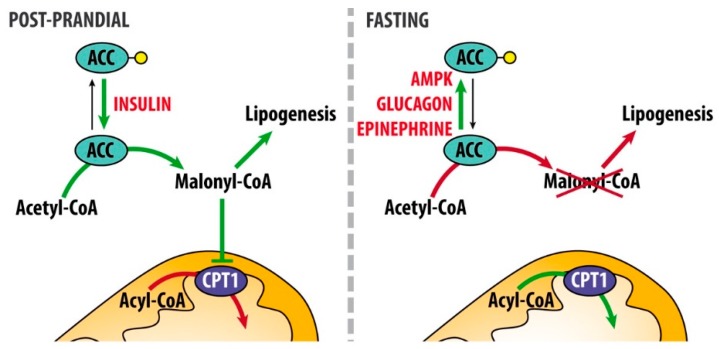Figure 2.
Hormonal regulation of malonyl-CoA synthesis. After a meal (left panel), insulin release promotes the dephosphorylation (phosphate group is here represented by the yellow dot) and activation of acetyl-CoA carboxylase, ACC, therefore increasing malonyl-CoA levels. This metabolite is the precursor for fatty acid synthesis but it also inhibits carnitin-palmitoyl transferase 1 (CPT1) activity and, consequently, fatty acid β-oxidation. Under this condition ketogenesis does not occur because of the lack of production of mitochondrial acetyl-CoA from fatty acid β-oxidation. During fasting (right panel), AMP kinase (AMPK), glucagon and epinephrine contribute to increase the phosphorylation and inactivation of ACC activity. Therefore, CPT1 activity is unlocked and fatty acid β-oxidation occurs, thus producing high amount of mitochondrial acetyl-CoA, which can be used as precursor for ketone body production. Green arrows indicate active reactions under a given condition; red arrows represent inactive reactions.

